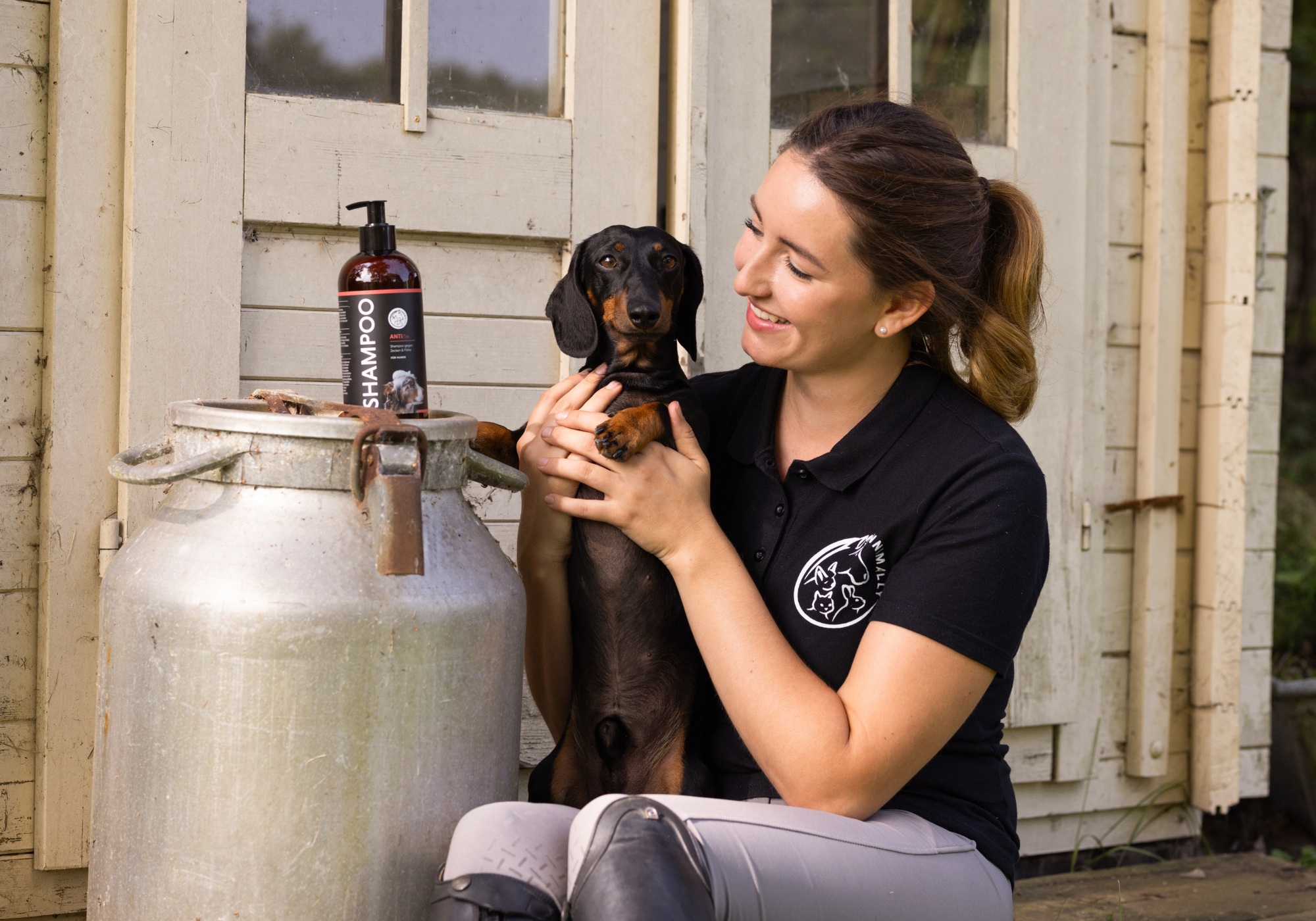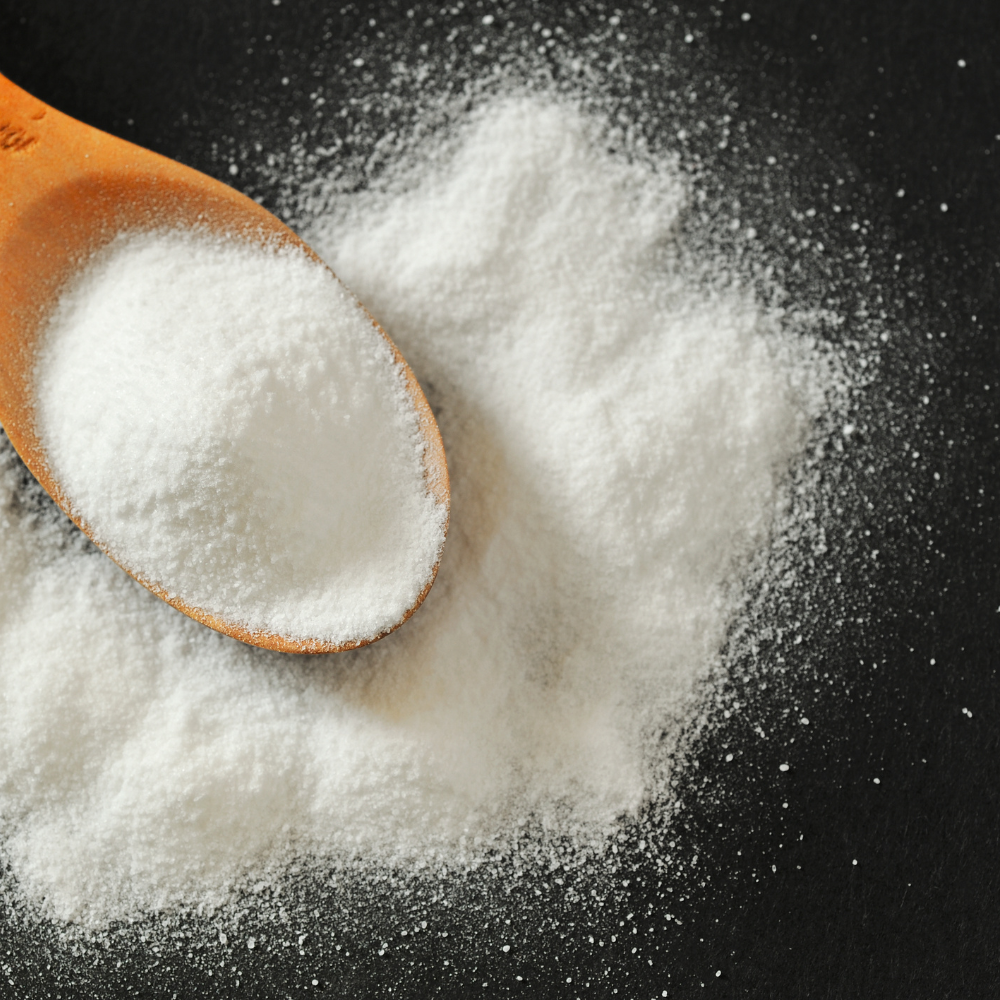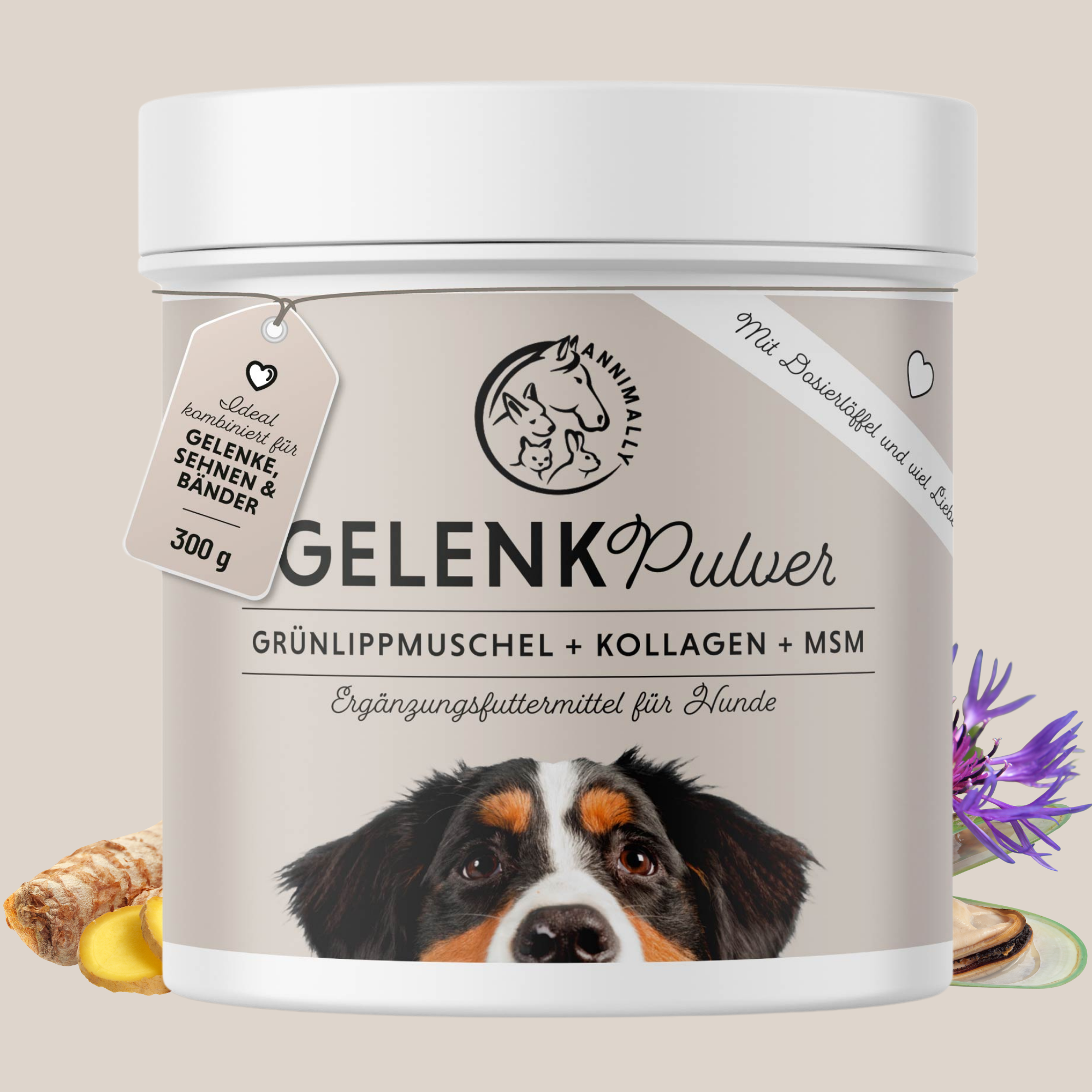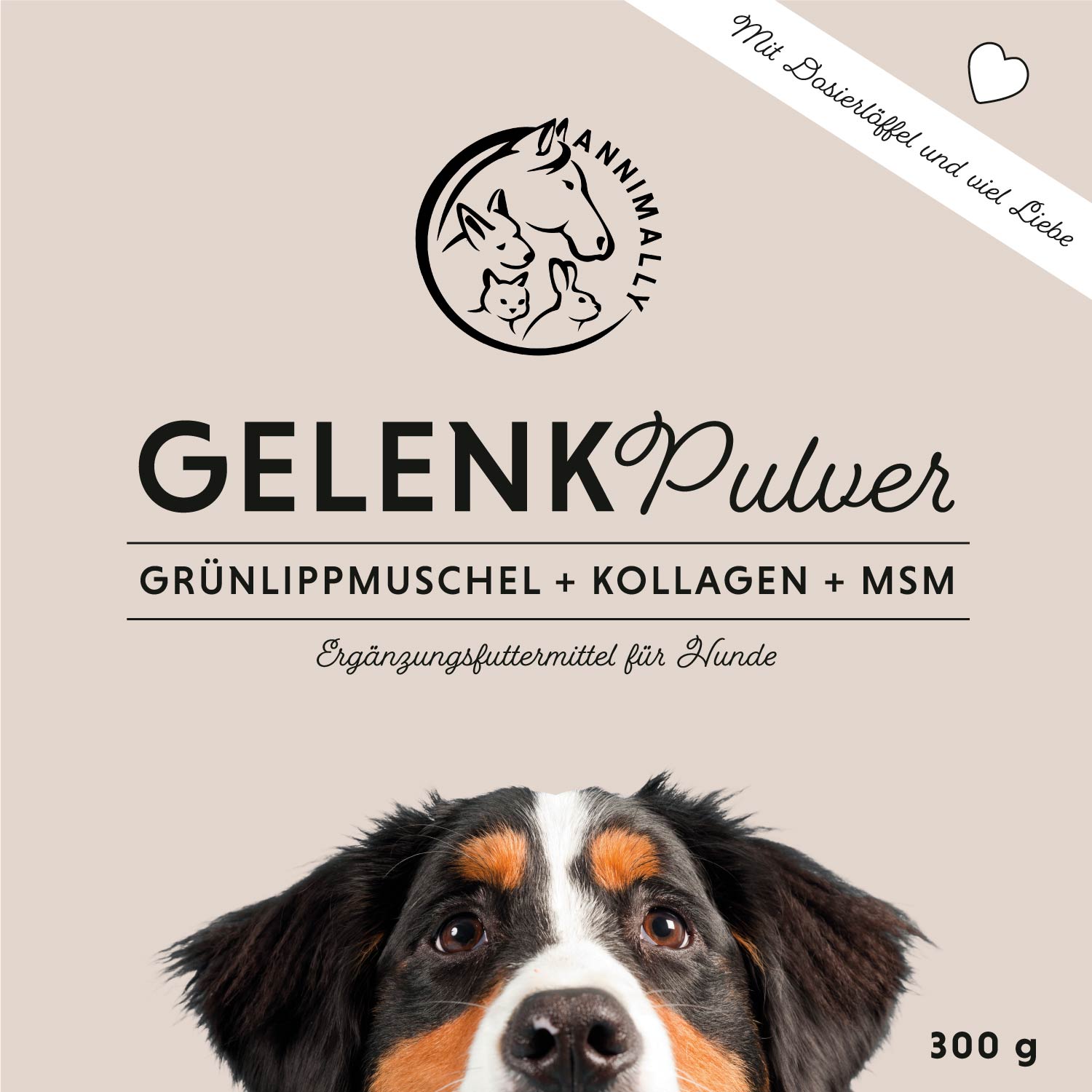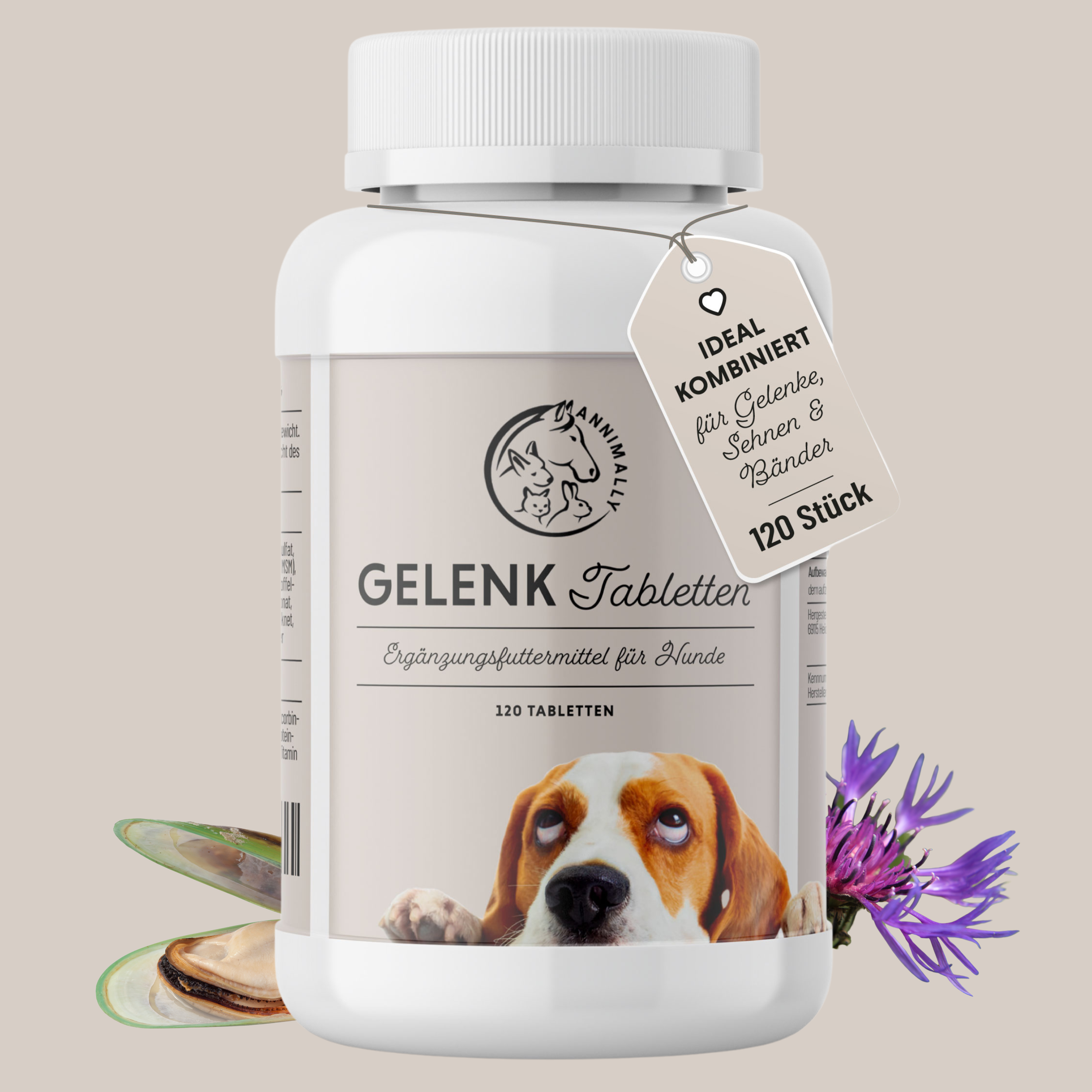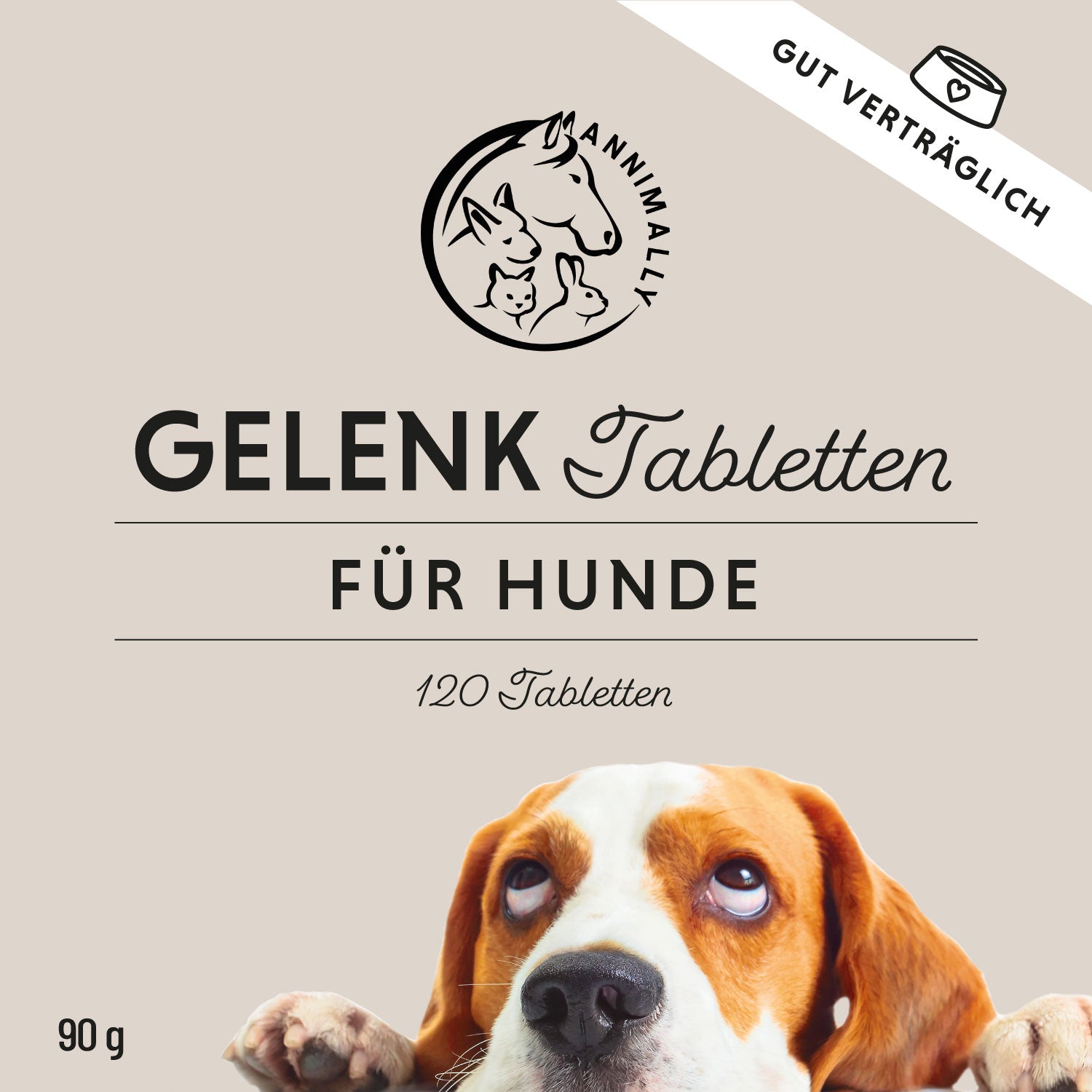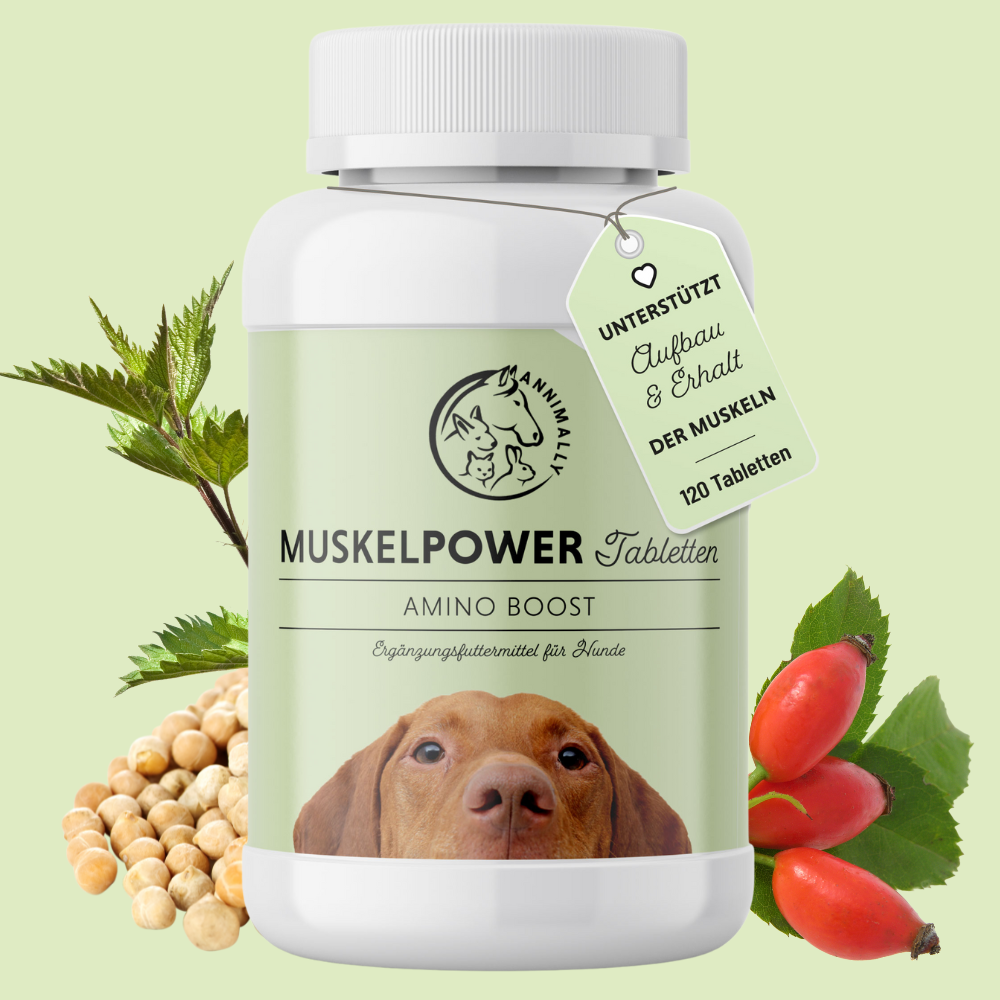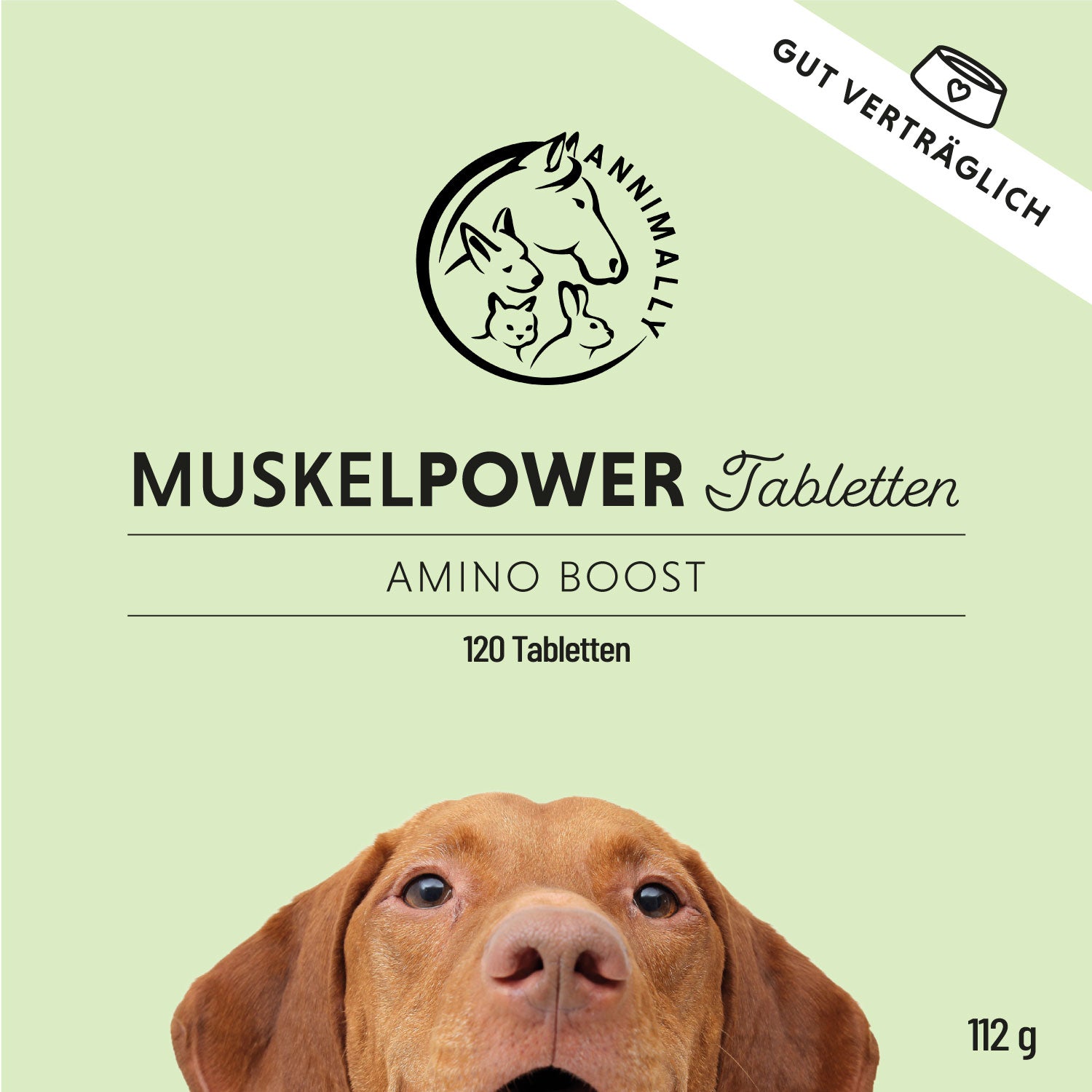Glucosamine for dogs: Support for healthy joints and increased mobility
Many dog owners are familiar with the problem: As their four-legged friend ages, they become less active and may begin to show signs of joint problems. Especially in older dogs, large breeds, or dogs subjected to high levels of physical activity, this can lead to restricted joint function and even pain.
A proven and often recommended supplement to promote mobility is glucosamine for dogs. This natural remedy can help keep your dog's joints healthy, protect cartilage, and thus ensure greater mobility and a better quality of life.
In this article, you'll learn everything you need to know about glucosamine, its use, the correct dosage, possible combinations with other active ingredients such as chondroitin and MSM, and the various products available for dogs (and other animals such as cats and horses).

What is glucosamine and why is it so important for dogs?
Glucosamine is a substance produced naturally in the body that plays a key role in the formation and regeneration of cartilage tissue. It is a natural compound found in your four-legged friend's synovial fluid and cartilage.
With increasing age or due to heavy exercise, the body's own production of glucosamine sulfate decreases. This can lead to slower cartilage regeneration and less optimal joint protection. The result: Your pet can no longer move as freely, may show signs of pain, or avoid certain movements altogether. Mobility changes and may be limited.
By administering glucosamine in a targeted manner, you can slow this process and promote the maintenance of cartilage structure. Especially when combined with chondroitin sulfate, MSM (methylsulfonylmethane), and vitamin C, glucosamine can help support joint health and improve pain relief.
How does glucosamine work in dogs?
The effect of glucosamine is based on several mechanisms:
Supports cartilage formation
Cartilage is an important component of joints and acts as a kind of "shock absorber" that protects bones from wear and tear. Glucosamine is an essential building block of this cartilage tissue and plays a key role in its regeneration and formation.
With increasing age or due to high levels of stress—for example, through sports, jumping, or long runs—cartilage can deteriorate and regenerate less effectively. This often leads to pain and limited mobility. Regular administration of glucosamine sulfate can help ensure the body continues to produce sufficient cartilage tissue, thus ensuring the maintenance of joint function.
Promotes synovial fluid
Synovial fluid is essential for smooth movement. It acts as a lubricant, minimizing friction between joint surfaces while simultaneously supplying nutrients to the cartilage.
When the production of this fluid decreases, a "dry" joint environment can develop, increasing the risk of inflammation and pain. Glucosamine can help promote the production of synovial fluid, thus enabling better mobility.
Improving joint lubrication can bring great benefits, especially for older dogs whose joint function is already limited.
Protection against cartilage degradation
In addition to supporting cartilage formation, glucosamine also helps protect existing cartilage and slow its degradation. This protective mechanism is especially important for four-legged friends who already suffer from joint problems or who are at increased risk of joint disease due to breed, age, or genetic predisposition.
Chondroitin sulfate, another key ingredient in many joint supplements, works in combination with glucosamine to slow cartilage degradation and stabilize its structure. While glucosamine promotes the production of new cartilage cells, chondroitin sulfate helps keep the cartilage resilient and less susceptible to wear and tear.
In addition, MSM (methylsulfonylmethane) can be supportive in many cases because it has anti-inflammatory properties and improves cell metabolism in cartilage.
Anti-inflammatory effect
Many dog owners report that their four-legged friends appear significantly less stiff and move more happily after taking glucosamine. This is due, among other things, to glucosamine's anti-inflammatory properties, which can help relieve pain.
When cartilage is damaged or synovial fluid decreases, inflammation often occurs in the joints. This leads to swelling, pain, and reduced mobility. Glucosamine sulfate can help the body better cope with these inflammatory reactions and alleviate symptoms.
For which four-legged friends is glucosamine particularly useful?
Glucosamine can be beneficial for all dogs, but especially for:
-
Older dogs who experience declining joint function over time.
-
Large breeds , as their weight puts greater strain on their joints.
-
Sporty, active dogs who suffer from wear and tear in their cartilage more quickly due to a lot of exercise.
-
Dogs with joint diseases such as osteoarthritis, hip dysplasia or elbow dysplasia.
But it's not just dogs that benefit from glucosamine – cats and horses can also achieve improved joint health through the additional intake of glucosamine.

What glucosamine products are available?
Glucosamine is available in various formulations, which can be selected according to your dog's preferences. Here are the most common dosage forms:
-
Powder : Glucosamine powder is easy to mix into food and easy to dose.
-
Capsules : Convenient for precise dosing, but not all dogs like to swallow them.
-
Tablets or chews : A popular form as they are often offered as treats.
-
Liquid : Can be easily mixed into food, ideal for dogs who avoid tablets.
Make sure that the quality and content of the items are high and that they do not contain any unnecessary additives.
Dosage and use of glucosamine for dogs
The amount your dog needs depends on their size and health. A general recommendation is:
-
Small dogs (up to 10 kg) : approx. 250 mg per day
-
Medium-sized dogs (10–25 kg) : approx. 500 mg per day
-
Large dogs (25–40 kg) : approx. 750 mg per day
-
Very large dogs (over 40 kg) : up to 1,000 mg per day
It is advisable to consult a veterinarian about the exact dosage to achieve the best possible results.

When will the first results be seen?
The effects of glucosamine don't begin immediately. It usually takes a few weeks for improvements in movement and joint function to become apparent. Many dog owners report noticing a positive change after about 4–6 weeks.
Long-term administration is recommended to ensure the maintenance of joint health and to provide optimal pain relief.
Conclusion: Glucosamine for better joint health in dogs
If you want to support your dog's joints, glucosamine is a useful supplement. Whether as a powder, capsules, or in combination with chondroitin sulfate and MSM, high-quality products can help your dog move pain-free again.
Older dogs or those with joint problems can especially benefit from glucosamine. However, it can also be useful preventatively to maintain long-term joint function.
Talk to your veterinarian to find the right formula and dosage for your dog. With the right support, you can give your four-legged friend more mobility, enjoyment of exercise, and a better quality of life!


